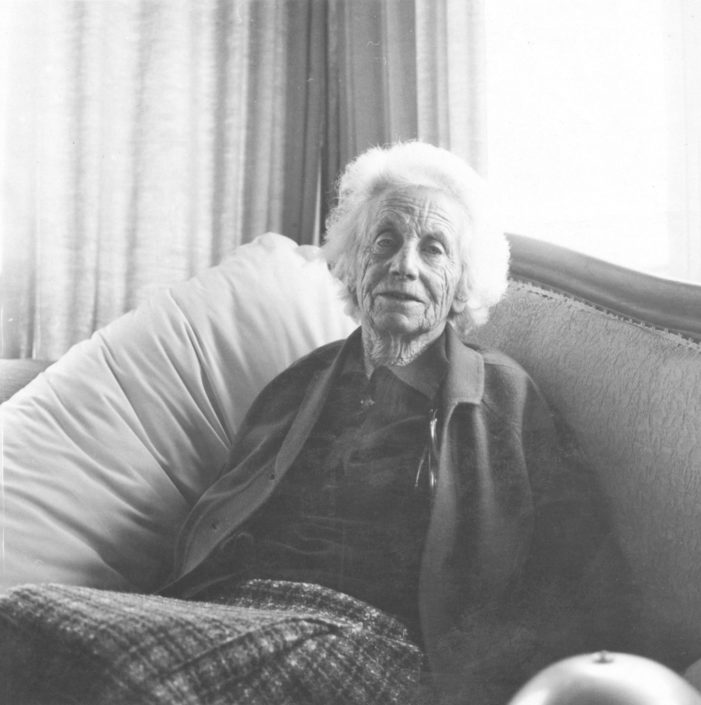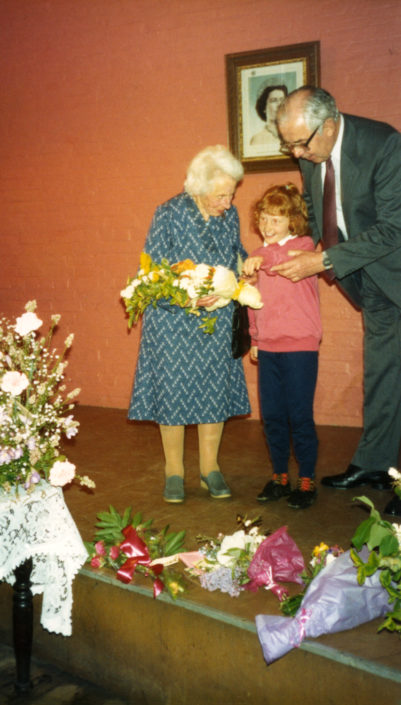Dorothea Henslowe
Dorothea Isabel Henslowe was once described in a newspaper as the ‘mother’ of Battery Point. She lived in our community for over 50 years and was certainly one our most notable residents.
Miss Henslowe (as she was commonly known) was born in Launceston in1896, the daughter of an Anglican minister. She trained as a kindergarten teacher and taught in many schools across Tasmania. During World War One she was a Voluntary Aid at Hornsey Hospital at Evandale after which she returned to teaching. Following the death of both her parents in 1935, Miss Henslowe travelled to Canada before settling in Battery Point in 1938. For over 30 years, she worked in an honorary capacity for the Australian Board of Mission, a missionary organisation of the Anglican Church that operated largely in Asia, the Pacific and with Aboriginal communities.
Miss Henslowe made a tremendous contribution to the preservation of the heritage values of Battery Point, and was very vocal about her concerns that Battery Point’s ‘unique attraction’ was being eroded by what she called, the ‘new look progress’. She was the moving force behind saving the Community Hall from its sale by the Hobart City Council to a developer who wanted it demolished to build a petrol station on the site. At the same time she led the establishment of the first Battery Point Community Centre Association.
Miss Henslowe was renowned for her tours around Battery Point. Her guided walks were famous – tourists sought her out because the tours were inexpensive and informal in character, with Miss Henslowe passionately sharing her love and knowledge of the history of the area. She raised thousands of dollars for the National Trust through these leisurely walks (with accompanying pamphlet) and also provided great publicity to this small corner of Tasmania. Miss Henslowe trained many locals to be volunteer guides. Some still live in Battery Point and remember, with great fondness, her determination that they also be successful guides.
In addition to her walks and involvement with the Community Hall, Miss Henslowe helped found the museum adjoining St George’s Church, which is still there today. She was also the fighting force behind the official recognition of the underground vault, the Mulgrave Battery, situated under Princess Park.
In 1985 Miss Henslowe was recognised by the National Trust, who made her a life member of the organisation at their silver jubilee celebrations. She also received a number of other awards in recognition of her community and tourism work, including a British Empire Medal in 1979. She was Hobart City Council’s Citizen of the Year in 1992 and in the same year she won the Tasmanian Visitor Corporation Award, an award created especially for her.
When Miss Henslowe first moved to Battery Point, there were many poor, underprivileged residents. At the time, Battery Point was often described as a ‘slum area’ and she became concerned about both the young and the elderly living in the area who had very little to do in their leisure time. To help them out she established and ran a daytime playgroup for younger children and weekly social evenings for older residents.
Miss Henslowe was a recognised author, writing several publications during her lifetime. Her two first books were about life in Papua New Guinea, which she had visited after establishing an Office for the Board of Missions in Hobart. Her third book is titled Our Heritage of Anglican Churches in Tasmania. She also wrote St George’s Church: A Guide to the Church together with A Short History compiled from Church Records 1824 to 1972.
In 1987 the park beside the Community Hall was renamed Henslowe Park in recognition of the significant role she played in its establishment. Miss Henslowe died in 1994 leaving behind not only a park named in her honour but a community that will be always grateful for her important role in preserving its unique heritage and enduring community spirit.
For an entertaining account of one of Miss Henslowe’s Battery Point tours, have a look at another story – Anecdotes of life in Battery Point in the 1970s with excerpts from Hilary Webster’s book.




